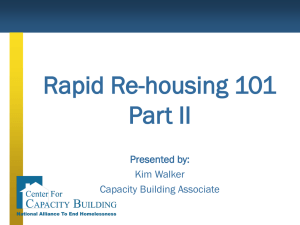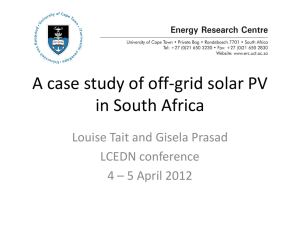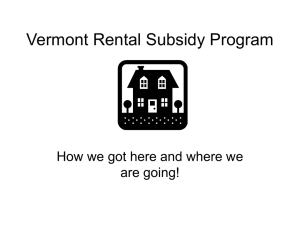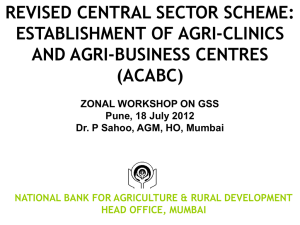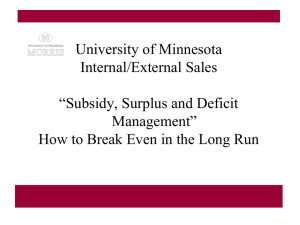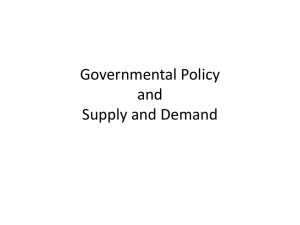Incidence of a tax
advertisement
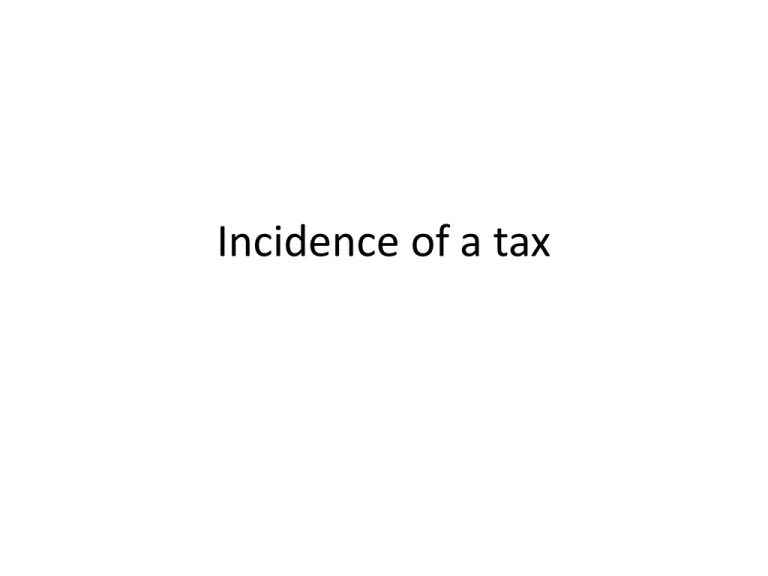
Incidence of a tax The Incidence of a sales tax • The incidence of a sales tax describes who actually bears the burden of the tax. – What portion of the tax does the producer pay? – What portion of the tax does the consumer pay? An Indirect Tax S+tax Indirect taxes increase costs and shift the supply curve to the left S Price Pm D Qm Quantity An Indirect Tax S+tax Consumers pay the new equilibrium price Pc S Price Pc Pm D Qm Quantity An Indirect Tax S+tax The per unit tax is measured by the vertical distance between the two supply curves S Price Pc Pm D Q’ Qm Quantity An Indirect Tax S+tax The producer recieves the lower price - Pp S Price Pc Pm Pp D Q’ Qm Quantity An Indirect Tax S+tax The government receives the shaded area as tax revenue S Price Pc Pm Pp D Q’ Qm Quantity An Indirect Tax S+tax S Price Original CS Pc Pm Pp D Q’ Qm Quantity An Indirect Tax S+tax S Price New CS Pc Pm Pp D Q’ Qm The area of tax which was previously CS represents the incidence of the tax on consumers Quantity An Indirect Tax S+tax S Price Original PS Pc Pm Pp D Q’ Qm Quantity An Indirect Tax S+tax S Price New PS Pc Pm Pp D Q’ Qm The area of tax which was previously PS represents the incidence of the tax on producers Quantity An Indirect Tax S+tax S Price DWL Pc Pm Pp D Q’ Qm Quantity An Indirect Tax Original PS S+tax S Price What area represents the incidence of the tax on producers? Pc Pm Pp D Q’ Qm The area of producer surplus they have lost and is now tax revenue to the government. Quantity An Indirect Tax S+tax Original CS S Price What area represents the incidence of the tax on consumers? Pc Pm Pp D Q’ Qm The area of consumer surplus they have lost and is now tax revenue to the government. Quantity The incidence of indirect taxes: depends on different demand elasticity's Relatively Inelastic Demand St Price P1 P S Incidence on Price Consumers Relatively Elastic Demand St S P1 P Incidence on Consumers D D Incidence on Producers Q1 Q Quantity Incidence on Producers Q1 Q Quantity When Whenaasales salestax taxisisimposed imposedon onaagood goodwith witharelatively relativelyinelastic elastic demand, demand,the quantity the government demanded is able is more to raise responsive a large to amount a change of tax in price. revenue, Thesuppliers government is not willable not to suffer raisea as large much drop taxinrevenue, sales andand thesuppliers incidencewill of suffer the taxafalls largemore drop in sales, heavily however on the the consumer incidence will fall more heavily on the producer. Excise Tax An excise tax is a tax on the sale of a commodity such as cigarettes, petrol or alcohol. • Excise taxes will raise the most revenue and result in the least DWL when the price elasticity of demand for the commodity is low. The Incidence of Subsidies • With a subsidy on consumer goods and services as medicine or public transport, the benefits will flow on to the consumer in the form of lower prices. – Who will benefit the most? – By how much? – How is this affected by differing levels of PED The incidence of Subsidies - Copy • The incidence of subsidy shows the extent to which consumers or producers will gain from the subsidy. A Subsidy S Price Pm D Qm Quantity A Subsidy Subsidies reduce costs and increase Supply S Price S+Subsidy Pm D Qm Quantity A Subsidy Consumers pay the new equilibrium price - Pc S Price S+Subsidy Pm Pc D Qm Q’ Quantity A Subsidy S Price S+Subsidy Pm The per unit subsidy is represented by the vertical distance between the two supply curves Pc D Qm Q’ Quantity A Subsidy Producers receive higher price -Pp S Price Pp S+Subsidy Pm Pc D Qm Q’ Quantity A Subsidy The total cost to the government is represented by the shaded area S Price Pp S+Subsidy Pm Pc D Qm Q’ Quantity A Subsidy S Price Original CS Pp S+Subsidy Pm Pc D Qm Q’ Quantity A Subsidy S Price New CS Pp S+Subsidy Pm Pc D Qm Q’ The gain in CS represents the incidence of a subsidy on consumers Quantity A Subsidy S Price Old PS Pp S+Subsidy Pm Pc D Qm Q’ Quantity A Subsidy S Price New PS Pp S+Subsidy Pm Pc D Qm Q’ The gain in PS represents the incidence of a subsidy on producers Quantity A Subsidy S Price DWL Pp S+Subsidy Pm Pc D Qm Q’ Quantity The incidence of subsidies The incidence of subsidies: effects of different demand elasticities Incidence of a subsidy: elastic demand P P2 +S S Producers share P1 S + subsidy Consumers share P2 O fig D Q1 Q2 Q Who receives the subsidy? • When the price elasticity of a good is elastic, the producers end up receiving most of the subsidy. Incidence of a subsidy: inelastic demand P S P2 + S P1 S + subsidy Producers share Consumers Share P2 D O fig Q1 Q2 Q Who receives the subsidy? • When price elasticity of demand is Inelastic, the consumers will receive most of the subsidy. • This occurs for goods that are a necessity (hence an inelastic demand curve).



